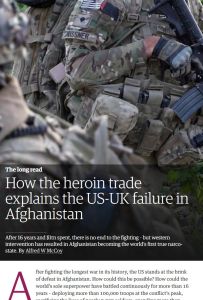
Recommendation
In a recent speech, US President Donald Trump vowed to bring the long war in Afghanistan to an end. But as historian Alfred W. McCoy explains, American military might can do little to address what's really fueling Afghanistan’s recurring cycles of insurgency and civil war. In a fascinating account tracing the history of Afghan conflicts, from the 1979 Soviet invasion to the present, McCoy illustrates how the rise and fall of Afghanistan's warring factions is inextricably linked to their ability to promote and control the opium trade.
Summary
About the Author
Alfred W. McCoy is Harrington professor of History at the University of Wisconsin-Madison.









Comment on this summary